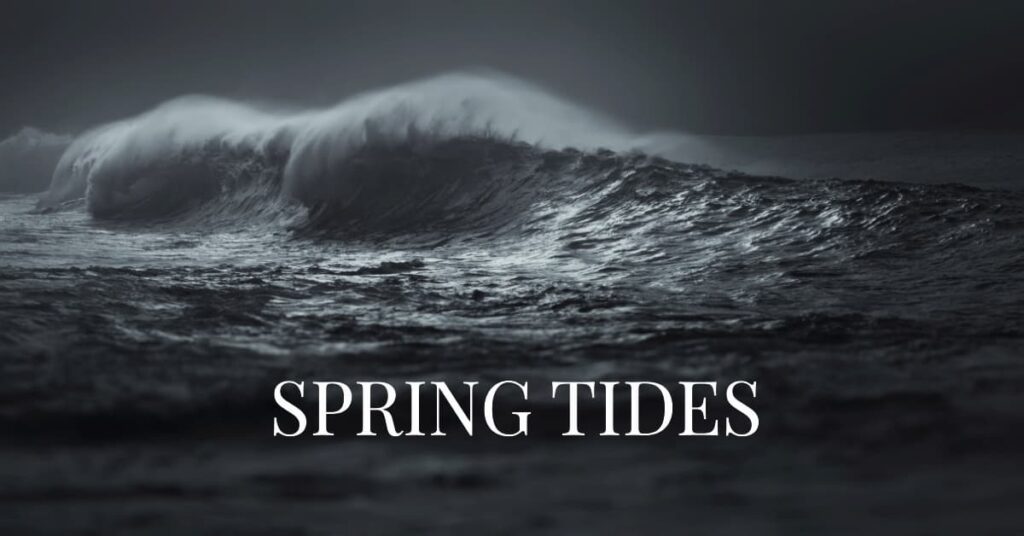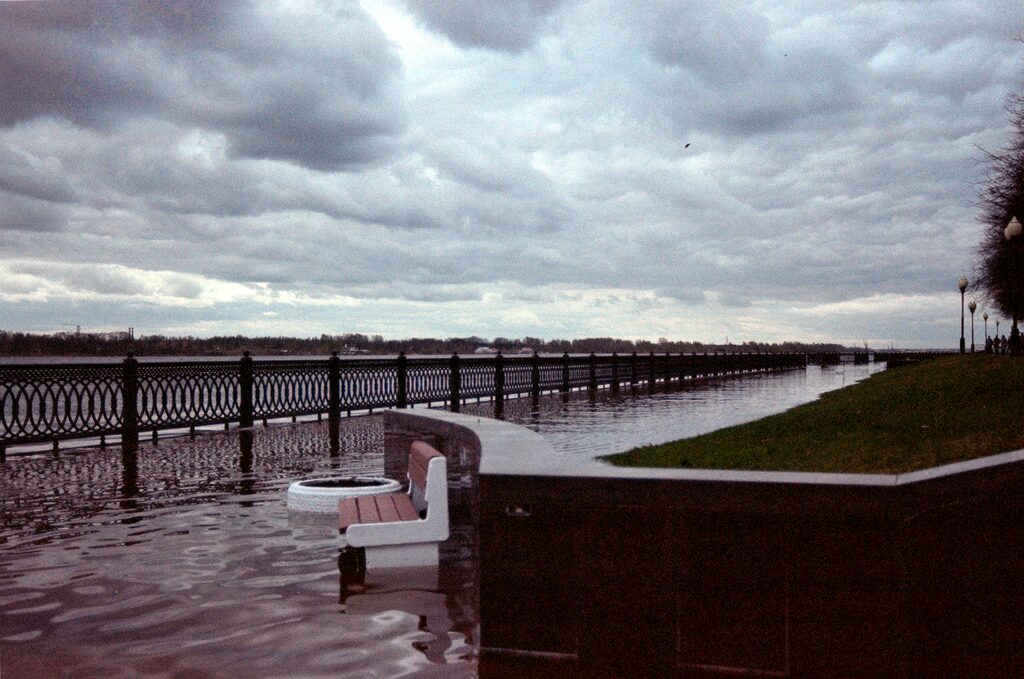The Lunar and Solar Cycles’ Impact on Tides
A spring tide is a natural phenomenon where tides are significantly higher than average, occurring when the gravitational pull of the Sun and Moon align during either a full or new moon. In contrast, a neap tide takes place when the Sun and Moon’s gravitational forces are at a right angle to each other, leading to lower-than-average tides.

To understand spring tides, we must first explore the relationship between the lunar cycle and the solar cycle. The gravitational forces of the Moon and the Sun are the primary drivers behind the tides we experience on Earth.
When the Moon is either full or new, the gravitational pull of the Sun and Moon align, causing the tides to be significantly higher than average. This is known as a spring tide.
Conversely, when the Moon is in its first or third quarter, the gravitational forces of the Sun and Moon are at a right angle to each other. This causes the tides to be lower than average, which is known as a neap tide.
Are Spring Tides the Highest?
Indeed, spring tides are typically the highest tides that occur during the lunar cycle. As we’ve previously discussed, spring tides happen when the gravitational forces of the Sun and Moon are in alignment, either during a full moon or a new moon. This alignment results in the highest tidal range, with the most significant difference between high and low tides.
However, it’s essential to differentiate between spring tides and king tides. While spring tides are a natural occurrence in the lunar cycle, king tides are extremely high tides influenced by factors beyond the typical gravitational forces. These factors can include sea level rise, climate change, and storm systems. King tides can result in even higher water levels than spring tides, leading to more severe coastal flooding and erosion.

The impacts of spring tides on coastal areas can be significant, particularly in regions that are already vulnerable to sea level rise and climate change. These high tides can cause various issues, including:
- Coastal erosion: The powerful waves generated during spring tides can strip away sand, rocks, and soil from coastlines, leading to the loss of beaches, dunes, and cliff faces. Over time, this erosion can reshape the coastline and threaten structures like homes, roads, and other infrastructure.
- Storm surges: When spring tides coincide with severe weather events, the risk of storm surges increases. Storm surges occur when strong winds and low atmospheric pressure push ocean water toward the shore, causing water levels to rise even higher than the usual high tide mark. This can lead to significant flooding and damage in coastal communities.
- Flooding: Low-lying coastal areas are particularly vulnerable to flooding during spring tides. Even in the absence of storm systems, spring tides can cause water levels to rise high enough to inundate homes, roads, and other infrastructure.
Given the potential hazards associated with spring tides, it’s vital for individuals and communities to be aware of these events and take appropriate precautions. This includes staying informed about tide predictions, implementing coastal management strategies to mitigate erosion and flooding risks, and ensuring that recreational activities like boating, swimming, and surfing are undertaken with safety in mind. By taking these steps, we can better protect our coastlines and the people who live and work along them.

The Four Types of Tides
There are four main types of tides: diurnal, semidiurnal, mixed, and shallow water.
- Diurnal tides: These tides occur once per day, with one high tide and one low tide.
- Semidiurnal tides: These tides occur twice daily, with two high tides and two low tides of roughly equal height.
- Mixed tides: These tides also occur twice per day, but the height of the high tides and low tides varies.
- Shallow water tides: These tides are influenced by the depth of the water and can cause significant variations in tide height.

How Long Do Spring Tides Last?
Spring tides typically last for about three days, with the highest tides occurring on the day of the full or new moon. After this period, the tides gradually transition back to neap tides, which last for about a week until the cycle repeats.
Why Are Spring Tides So Extreme?
The extreme nature of spring tides can be attributed to the combined gravitational pull of the Sun and the Moon. When these two celestial bodies align, their combined gravitational forces create a “tug” on the Earth’s oceans, causing the water to bulge and create high tides.
Spring Tides and Marine Life
Spring tides don’t just affect coastal communities and beach erosion; they also have a significant impact on marine life. The increased water movement during spring tides can lead to unique opportunities for marine creatures, such as feeding on organisms that are brought to the surface by the tides.
Estuaries, tide pools, and other coastal ecosystems are particularly affected by spring tides, as the influx of seawater can drastically change the salinity and nutrient levels in these areas. This can lead to shifts in the types and abundance of marine life found in these habitats.
Staying Safe During Spring Tides
As fascinating as spring tides can be, it’s crucial to exercise caution during these events. Here are some tips for staying safe during spring tides:
- Check tide tables: Before venturing out to the beach, boating, or engaging in any water-related activities, consult tide tables to understand when high and low tides are expected. This can help you plan your activities accordingly and avoid getting caught in dangerous conditions.
- Be aware of coastal erosion: Spring tides can contribute to beach erosion, making the shoreline more unstable. Be cautious near cliffs or areas where erosion is evident, and avoid walking too close to the water’s edge during high tides.
- Swimmer and surfer safety: The strong currents and waves associated with spring tides can make swimming and surfing more dangerous. Make sure to swim with a buddy, and never turn your back on the ocean. If you’re a less experienced swimmer or surfer, it’s best to avoid the water during spring tides.
- Boating safety: Boaters should be aware of the changing water levels and currents during spring tides. This can affect navigation and the accessibility of certain areas. Make sure to have updated nautical charts and pay close attention to the local conditions.
- Respect marine life: Spring tides can bring unique opportunities to observe marine life, but it’s essential to respect these creatures and their habitats. Avoid disturbing tide pools or other ecosystems, and remember to practice “leave no trace” principles.
Spring Tides and Climate Change
Climate change is causing sea levels to rise, which can exacerbate the effects of spring tides. As ocean levels increase, the risk of flooding and storm surges in coastal communities becomes more significant. This underscores the importance of understanding and mitigating the impacts of climate change on our oceans and coastal areas.
In conclusion, spring tides are captivating natural events that result from the interplay of the lunar and solar cycles. They provide unique opportunities to observe marine life and coastal ecosystems but also present challenges to coastal communities, boating safety, and swimmer safety. By understanding the causes and effects of spring tides, we can better appreciate their role in shaping our planet and work to protect our coastal environments and communities.
- Types of Gas Carriers as per IGC Code – April 22, 2025
- Wind-Assisted Propulsion Systems (WAPS): A Game Changer for Maritime Decarbonization – February 6, 2025
- 10 Boat Salvage Yards in California – January 25, 2025




